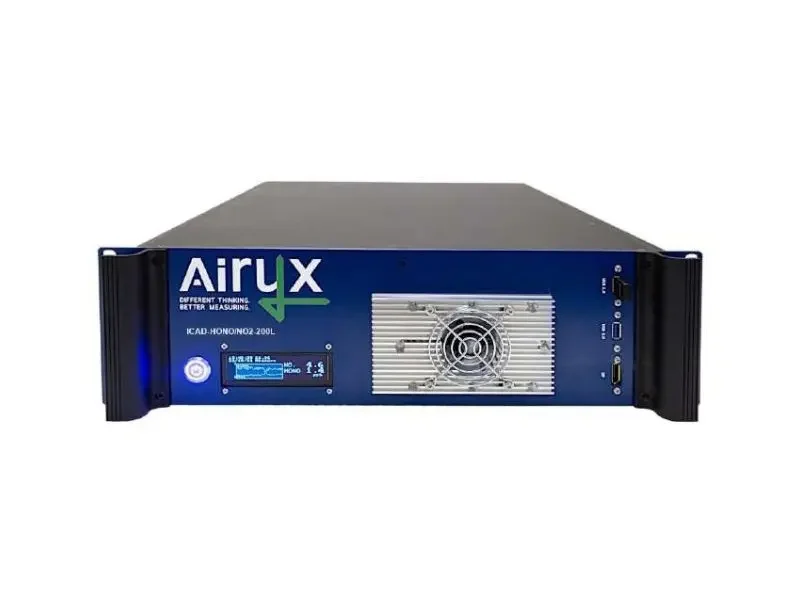How it works
The ICAD (Iterative CAvity enhanced DOAS) HONO / NO₂ measurement system uses direct optical absorption spectroscopy in the spectral range between ~ 360 to 390 nm.
By measuring the absorption spectrum and applying the ICAD algorithm, the unique and characteristic absorption structures of HONO and NO₂ are directly identified and separated from other overlapping absorptions like water vapour (H₂O) or O₄. This gives the advantage of direct HONO and NO₂ measurements (in comparison to LOPAP and CLD) without interferences to other substances or the need of drying mechanism which introduce new interferences (e.g., LOPAP, CLD, CRD, CAPS).
Applications include:
- High precision HONO / NO₂ measurements (science, research, background air pollution monitoring)
- Urban air quality monitoring (outdoor, streets, tunnels, street canyons, mobile measurements)
- Indoor air quality and workplace monitoring
- Mobile, quick and precise HONO / NO₂ pollution study, personal exposure studies e.g., for workspaces, pedestrians
- Emission monitoring (e.g., stacks)






